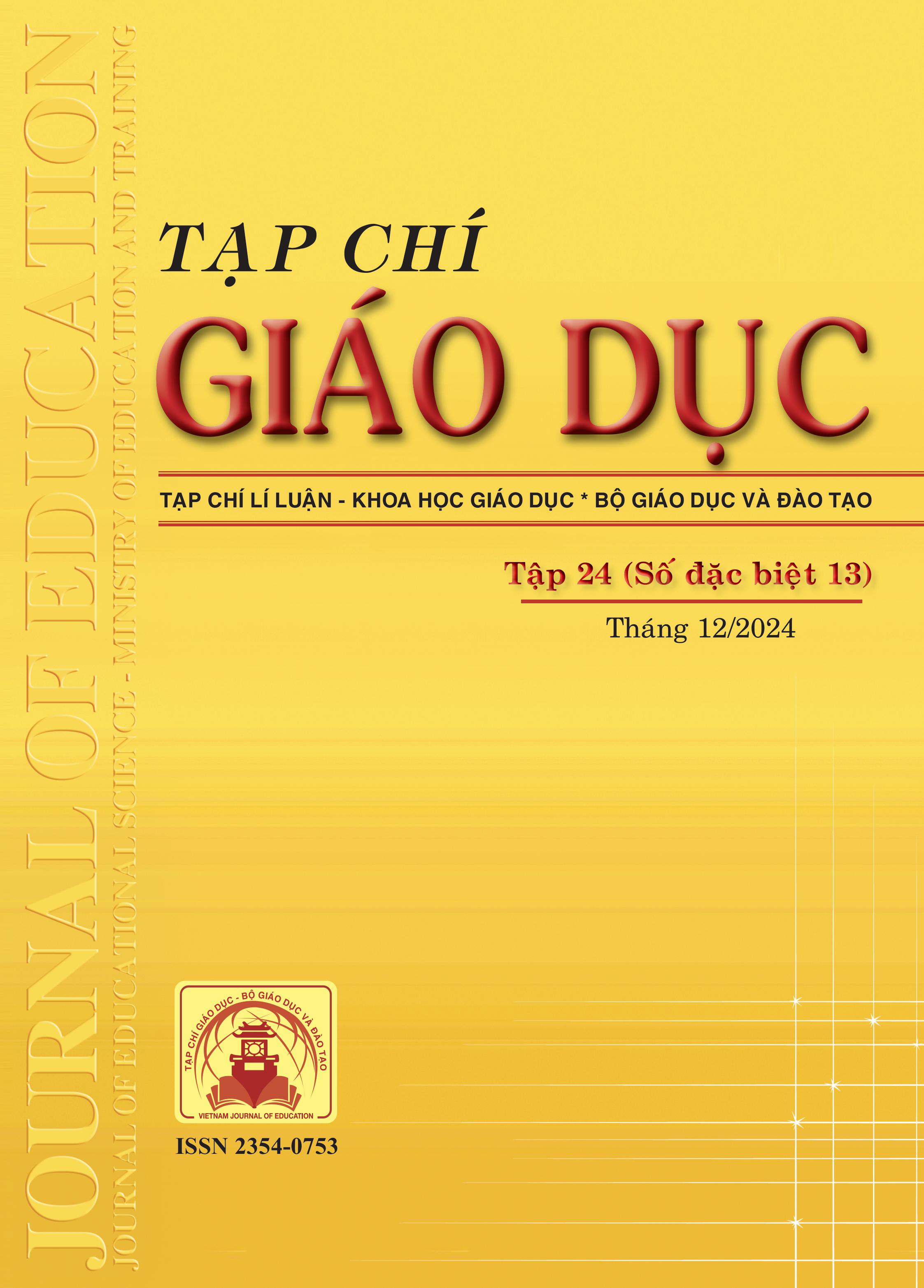Nghiên cứu về giáo dục kĩ năng định hướng và di chuyển cho trẻ khiếm thị đa tật
Tóm tắt
Visual impairments in blind children in general and children with multiple disabilities and blindness in particular severely affect their learning, playing, daily activities and community integration. One of the core skills for children with visual impairment and multiple disabilities to be independent and autonomous is the ability to move independently. Guidance and transfer are the foundation for learning because as children continue to explore the world around them, learning will take place. Therefore, educating children with visual impairment and multiple disabilities to move independently and autonomously in different environments is the key to ensuring the success of inclusive education. This article reviews the concept of children with visual impairment and multiple disabilities, the concept of orientation and mobility, introduces assessments and measurements of orientation and mobility skills and proposes the basic contents of the Orientation and Mobility Skills Education program for children with visual impairment and multiple disabilities.
Tài liệu tham khảo
Abosi, O. (2001). The effects of orientation and mobility training on the locomotory behaviour of visually handicapped children. Journal of Special Education and Rehabilitation, 2(1), 132-138.
Attia, P. (2020). Impediments to orientation and mobility training programmes in Ghanaian basic schools: A case of WA School for the Blind. International Journal of Advanced Research, 8(05), 832-838.
Bischof, E. M. (2008). Practices for determining the provision of orientation and mobility instruction for students with low vision. Unpublished doctoral dissertation, Florida State University.
Boehm, A. (2000). Boehm Test of Positional Concepts. Psychological.
Brambring, M. (2007). Divergent development of manual skills in children who are blind or sighted. Journal of Visual Impairment & Blindness, 101(4), 212-225. https://doi.org/10.1177/0145482X0710100404
Fazzi, D., & Klein, D. (2002). Cognitive focus: Developing cognition, concepts, and language. In R. Pogrund & D. Fazzi (Eds.), Early focus: Working with children who are blind or visually impaired and their families (pp. 107-153). New York: American Foundation for the Blind.
Fazzi, D., & Patermeyer, M. (2001). How to raise a blind child. Benseim: ChristofelBlinden Mission Publications.
Gargiulo, D. M. (2006). Orientation and mobility training: The way to go. Deaf Blind Outreach Press.
Hill, E. W., & Blasch, B. B. (2000). Concept development. American Foundation for the Blind.
Hill, E., & Ponder, P. (2001). Orientation and mobility techniques. American Foundation for the Blind.
Huebner, K. L. (2003). Hand in hand: Essentials for communication and mobility for your students who are deafblind. American Foundation for the Blind.
Huurre, T., & Aro, H. (2000). The psychosocial well-being of Finnish adolescents with visual impairments versus those with chronic conditions and those with no disabilities. Journal of Visual Impairment & Blindness, 94(10), 625-637. https://doi.org/10.1177/0145482X0009401003
Leonand, M. (2010). Making the visually impaired independent. Royal Society for the Blind.
Lewis, S. (2007). Understanding students with visual impairments. Prentice Hall.
Lewis, S., & Iselin, M. (2002). Orientation and mobility: Techniques for independence. http://www.icdvrat.rdg.ac.uk
Lowenfeld, B. (1991). The visually handicapped child school. Constable and Company Ltd.
Martinez, C. (2011). Orientation and mobility: The way to go. TSBVI Texas Deaf Blind Outreach.
Milaham, N. (2003). Investigation into the specific long cane techniques that can be taught to nursery school blind children in Bauchi, Kano, and Maiduguri. Journal of Research in Special Education, 4(1), 92-98.
Miller, M. M., Menacker, S. J., & Batshaw, M. L. (2002). Vision: Our window to the world. In M. L. Batshaw (Ed.), Children with disabilities (pp. 165-192). Baltimore, MD: Paul H. Brookes.
Parker, A. T., & Pogrund, R. L. (2009). A Review of Research on the Literacy of Students with Visual Impairments and Additional Disabilities. Journal of Visual Impairment & Blindness, 103(10), 635-648. https://doi.org/10.1177/0145482X0910301007
Parker, A. T., Grimmett, E. S., & Summers, S. (2008). Evidence-Based Communication Practices for Children with Visual Impairments and Additional Disabilities: An Examination of Single-Subject Design Studies. Journal of Visual Impairment & Blindness, 102(9), 540-552. https://doi.org/10.1177/0145482X0810200904
Pogrund, R. L. (2012). Early focus: Working with young children who are blind and visually impaired and their families. AFB Press.
Riley, R. W. (2000). Educating blind and visually impaired students: Policy guidance. Federal Register, 65(111), 36585-36594.
Rosen, S. (2010). Kinesiology and sensorimotor functioning for students with vision loss (3rd ed.). American Foundation for the Blind.
Vicki, M. S. (2017). Orientation and mobility guidelines and procedures. Villa CA Press.
Welsh, R. L., & Blasch, B. B. (2010). Foundation of orientation and mobility. American Foundation for the Blind.
Yakubu, A. F., Bodang, J. R., & Amwe, R. A. (2017). Orientation and mobility programmes for students with visual impairment: Implication for inclusive education. International Journal of Academic Research and Review, 5(3), 95-100.
Đã Xuất bản
Cách trích dẫn
Số
Chuyên mục
Giấy phép

Tác phẩm này được cấp phép theo Ghi nhận tác giả của Creative Commons Giấy phép quốc tế 4.0 .












